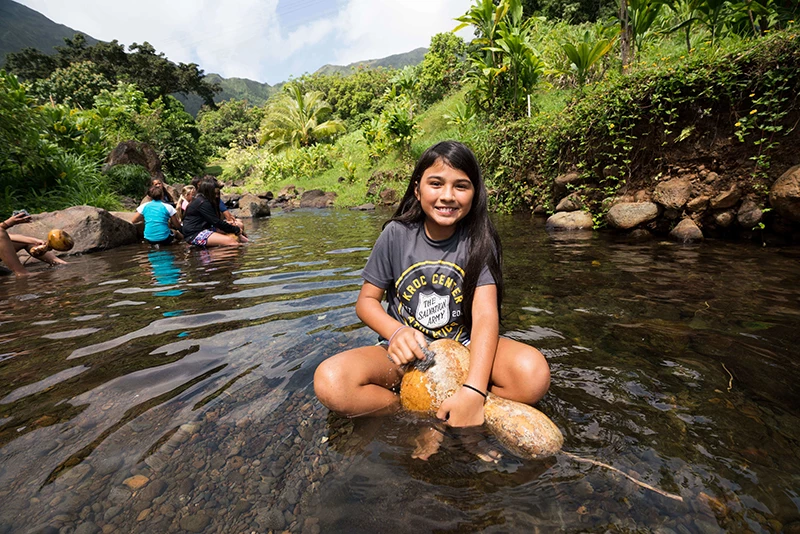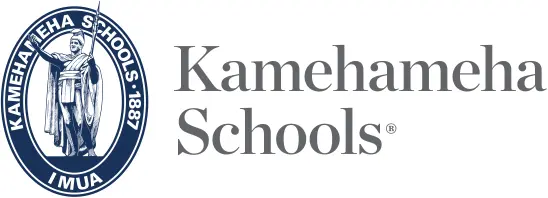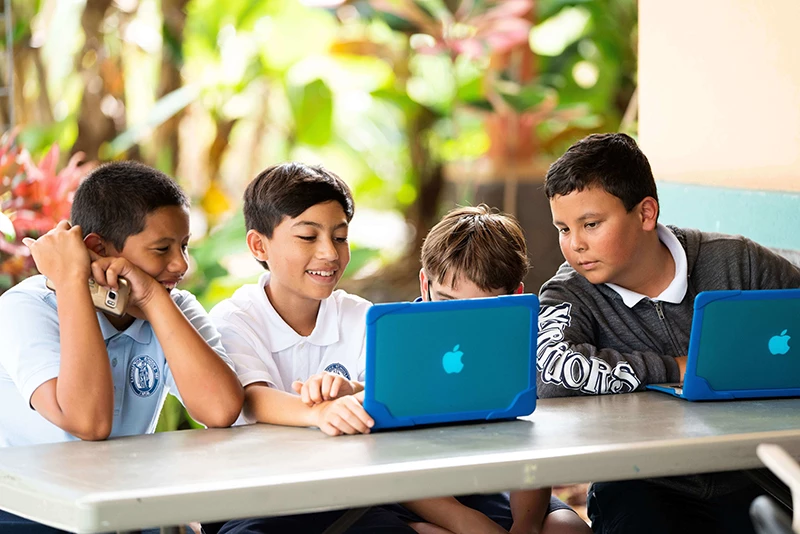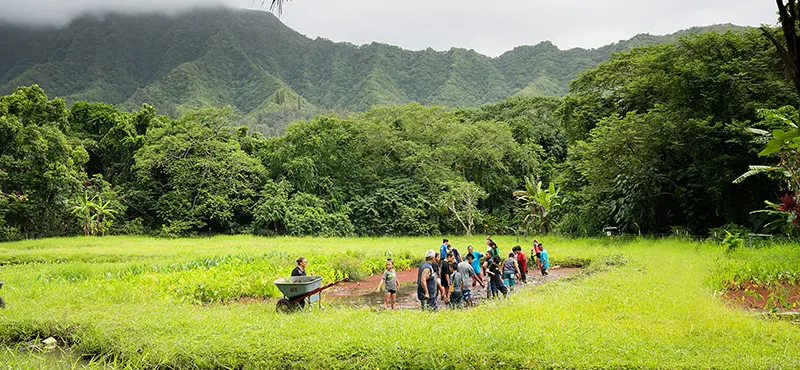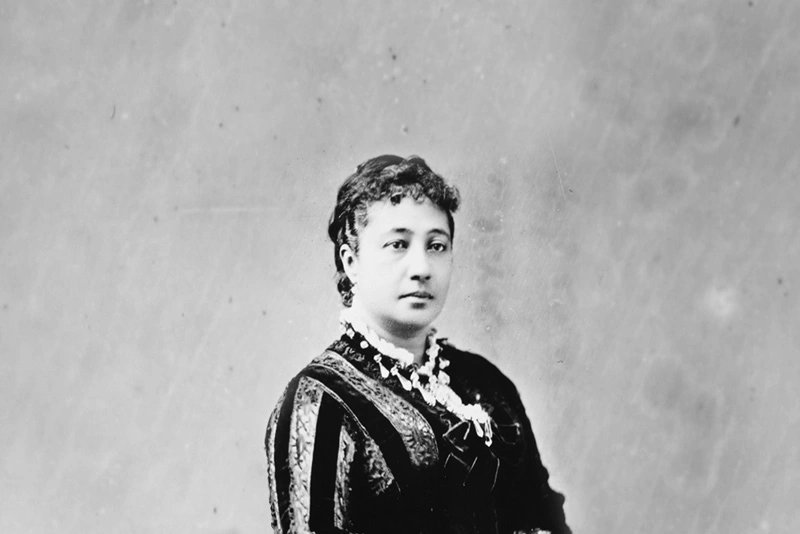|
Use of Native Language and Culture (NLC) in Elementary and Middle School Instruction as a Predictor of Mathematics Achievement | Mark J. Van Ryzin and Claudia G. Vincent | 2017 | K-12 | Journal | Education (general)
|
|
Triarchically-Based Instruction and Assessment of Sixth-Grade Mathematics in a Yup'ik Cultural Setting in Alaska | Robert J. Sternberg, Jerry Lipka, Tina Newman, Sandra Wildfeuer, and Elena L. Grigorenko | 2005 | K-12 | Journal | |
|
The Influences of Indigenous Heritage Language Education on Students and Families in a Hawaiian Language Immersion Program | Rebecca J. I. Luning and Lois A. Yamauchi | 2010 | General | Journal | |
|
The Effects of a Hawaiian Language Immersion Program on Student and Family Development | Rebecca J.I. Luning | 2007 | K-12 | Dissertation | |
|
The Development of an Inventory of Exemplary Hawaiian Leadership Behaviors | Guy Kaulukukui and Daniel Nahoʻopiʻi | 2008 | General | Journal | |
|
Psychometric Properties of the Hawaiian Culture Scale - Adolescent Version | Earl Hishinuma, Naleen Andrade, Ronal Johnson, John McArdle, Robin Miyamoto, Linda Nahulu George Makini, Noelle Yuen, Stephanie Nishimura, John McDermott, Jane Waldron, Kenneth Luke, and Alayne Yates | 2000 | K-12 | Journal | |
|
Native Hawaiians in Public Schools: Implications of AYP Status in Predominantly Native Hawaiian Schools | Wendy Kekahio | 2007 | K-12 | Brief | |
|
Native Hawaiian Educational Assessment Update 2009: A Supplement to Ka Huakaʻi 2005 | Kamehameha Schools | 2009 | General | Report | |
|
Mohala i ka wai: Cultural Advantage as a Framework for Indigenous Culture-Based Education and Student Outcomes | Shawn M. Kanaiaupuni, Brandon Ledward, and Nolan Malone | 2017 | K-12 | Journal | |
|
Making Meaning: Connecting School to Hawaiian Students' Lives | Lois A. Yamauchi, Tasha R. Wyatt, and Alice H. Taum | 2005 | K-12 | Journal | |
|
Left Behind? The Status of Hawaiian Students in Hawaiʻi Public School | Shawn M. Kanaʻiaupuni and Koren Ishibashi | 2003 | K-12 | Report | |
|
Kū i Ke Ao: Hawaiian Cultural Identity and Student Progress at Kamehameha Elementary School | Robert Holoua Stender | 2010 | K-12 | Dissertation | |
|
Kikī Nā Wai: Swiftly Flowing Streams, Examples of ʻOhana and Community Integration in Culture-Based Education | Brandon Ledward, Brennan Takayama, and Walter Kahumoku, III | 2008 | General | Brief | |
|
Ke Aʻo Hawaiʻi (Critical Elements for Hawaiian Learning): Perceptions of Successful Hawaiian Educators | Alice J. Kawakami and K. Kanani Aton | 2001 | General | Journal | |
|
Ka Huaka‘i: 2005 Native Hawaiian Educational Assessment | Shawn M. Kanaʻiaupuni, Nolan Malone, and Koren Ishibashi | 2005 | General | Report | |
|
Initial psychometric validation of he ana mana‘o o nā mo‘omeheu Hawai‘i: A Hawaiian ethnocultural inventory (HEI) of cultural practices | Kamanaʻopono Crabbe | 2002 | General | Dissertation | Demographics
|
|
Improving the Practice of Evaluation Through Indigenous Values and Methods: Decolonizing Evaluation Practice-Returning the Gaze from Hawaiʻi to Aotearoa | Alice J. Kawakami, Kanani Aton, Fiona Cram, Morris K. Lai, and Laurie Porima | 2007 | General | Journal | |
|
Improving academic performance among Native American students: A review of research literature. | William Demmert Jr. | 2003 | General | Report | |
|
Hoʻopilina: The call for cultural relevance in education | Shawn M. Kanaʻiaupuni and Brandon Ledward | 2013 | General | Journal | |
|
Hoʻomau i nā ʻŌpio Field-Test Findings from the 2008 Pilot-Test of the Nā ʻŌpio Youth Development and Assests Survey | Katherine Tibbets and Shawna Medeiros | 2008 | K-12 | Report | |
|
Ho‘opilina Kumu: Culture-Based Education among Hawai‘i Teachers | Brandon Ledward, Brennan Takayama, and Kristin Elia | 2009 | General | Report | |
|
Ho‘omau i nā ōpio: Field-test findings of the nā ‘ōpio: Youth development and assessment survey | Katherine Tibbets, Shawna Medeiros, and Jacqueline Ng-Osorio | 2009 | K-12 | Report | |
|
He Pūkoʻa Kani ʻĀina: Mapping Student Growth in Hawaiian-Focused Charter School | Shawn M. Kanaʻiaupuni | 2008 | K-12 | Journal | |
|
Hawaiian Cultural Influences in Education (HCIE): School Engagement among Hawaiian Students | Brennan Takayama and Brandon Ledward | 2009 | K-12 | Report | |
|
Hawaiian Cultural Influences in Education (HCIE): Culture-Based Education among Hawai‘i Teachers | Brandon Ledward, Brennan Takayama, and Kristin Elia | 2009 | General | Report | |
|
Hawaiian Cultural Influences in Education (HCIE): Cultural Knowledge and Practice among Hawaiian Students | Brandon Ledward and Brennan Takayama | 2009 | K-12 | Report | Education (general)
|
|
Hawaiian Cultural Influences in Education (HCIE): Community Attachment and Giveback among Hawaiian Students | Brandon Ledward and Brennan Takayama | 2009 | K-12 | Report | |
|
Hawaiian Cultural Influences in Education (HCIE): 'Ohana and Community Integration in Culture-Based Education | Brandon Ledward, Brennan Takayama, and Walter Kahumoku, III | 2008 | General | Report | |
|
Hawaiian Cultural Connectedness: HCC Survey and Its Uses | Kamehameha Schools | 2009 | K-12 | Instrument | |
|
Hawaiʻi Charter Schools: Initial Trends and Select Outcomes for Native Hawaiian Students | Shawn M. Kanaʻiaupuni and Koren Ishibashi | 2005 | K-12 | Report | |
|
From a Place Deep Inside: Culturally Appropriate Curriculum as the Emodiment of Navajo-ness in Classroom Pedagogy | Tarajean Yazzie-Mintz | 2007 | General | Journal | Hawaiian Culture-based Education
|
|
Family Involvement in a Hawaiian Language Immersion Program | Lois A. Yamauchi, Jo-Anne Lau-Smith, and Rebecca J.I. Luning | 2008 | K-12 | Journal | |
|
Education with Aloha and Student Assets | Katherine Tibbets, Kū Kahakalau, and Zanette Johnson | 2007 | K-12 | Journal | |
|
Education and Native Hawaiian Children: Revisiting KEEP | Roland G. Tharp, Cathie Jordan, Gisela E. Speidel, Kathryn Hu-Pei Au, Thomas W. Klein, Roderick P. Calkin, Kim C.M. Sloat, and Ronald Gallimore | 2007 | K-12 | Journal | |
|
E nānā i ke kumu. A Look at the Teacher: A study of the essential competencies of a Pūnana Leo teacher | Noelani Iokepa-Guerrero | 2004 | General | Dissertation | |
|
E Lauhoe mai nā wa‘a: Toward a Hawaiian indigenous education teaching framework | Shawn M. Kanaʻiaupuni and Keiki Kawaiʻaeʻa | 2008 | General | Journal | |
|
Culture-Based Education and Its Relationship to Student Outcomes | Shawn M. Kanaʻiaupuni, Brandon Ledward, and ʻUmi Jensen | 2013 | K-12 | Journal | |
|
Culturally Responsive Schooling for Indigenous Youth: A Review of the Literature | Angelina E. Castagno and Bryan McKinley Jones Brayboy | 2008 | K-12 | Journal | |
|
Culturally Congruent Teaching Strategies: Voices From the Field | Nanette S. Schonleber | 2007 | General | Journal | |
|
Critical Culturally Sustaining/Revitalizing Pedagogy and Indigenous Education Sovereignty | Teresa L. McCarty and Tiffany S. Lee | 2014 | General | Journal | Families, Communities, and Systems
|
|
Constant Perimeter, Varying Area: A Case Study of Teaching and Learning Mathematics to Design a Fish Rack | Anthony Rickard | 2005 | K-12 | Journal | |
|
An Exploratory Study of Cultural Identity and Culture-Based Educational Program for Urban American Indian Students | Kristin M. Powers | 2006 | K-12 | Journal | |
|
Aloha Counts: Census 2000 special tabulations for Native Hawaiians | Kamehameha Schools | 2003 | General | Report | |
|
Academic Achievement Across School Types in Hawaiʻi: Outcomes for Hawaiian and non-Hawaiian students in conventional public schools, western-focused charters, and Hawaiian language and culture-based schools | Brennan Takayama | 2008 | K-12 | Journal | |
|
A Review of the Research Literature on the Influences of Culturally Based Education on the Academic Performance of Native American Students | William Demmert Jr. and John C. Towner | 2003 | General | Report | |
|
A Native Hawaiian Focus on the Hawaiʻi Public School System, SY2015 | Office of Hawaiian Affairs | 2017 | K-12 | Report | |


